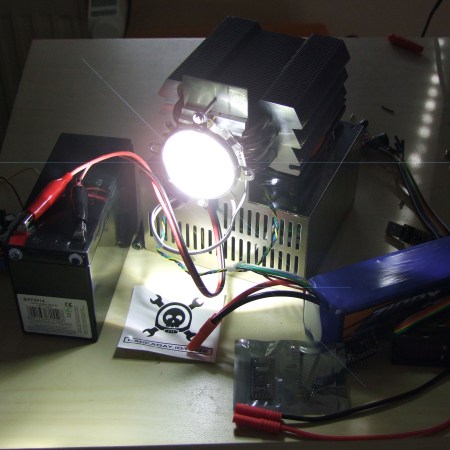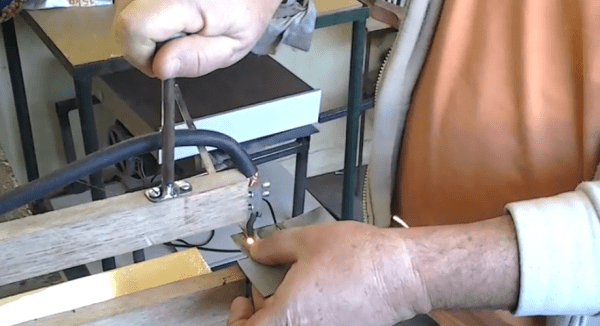
[Yannick] got a hold of a 100W LED diode recently, and like any self-respecting hacker, he just had to turn it into a ridiculously over powered flash light.
The tricky thing about these diodes is that they need a high amount of DC voltage, anywhere from 32-48V typically. [Yannick’s] using a 12V sealed lead acid battery coupled with a 600W constant current boost converter which ups it to 32V at around 3.2A. He also managed to find a giant aluminum heat-sink to keep the diode from getting too hot. A 120mm fan helps to keep the heat sink nice and cool, which allows the light to be run constantly without fear of burning it out. But just in case he also has an Arduino monitoring the temperatures — oh and it provides PWM control to adjust the brightness of the light!
To focus the flashlight he bought a proper lens and reflector which can be mounted directly to the diode. At full power the LED puts out around 8500lm, which is brighter than almost all consumer projectors available — or even the high beams of a car!
Continue reading “Monster 100W LED Flashlight Produces A Whopping 8500lm!”
















